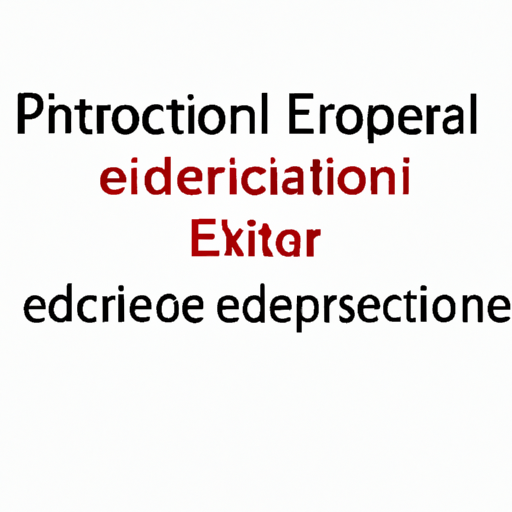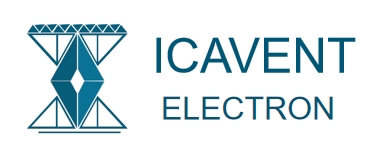What is the Purchase Price of the Latest Standard Capacitor?

I. Introduction
Capacitors are fundamental components in electronic circuits, serving as energy storage devices that can release energy when needed. They play a crucial role in various applications, from smoothing out voltage fluctuations in power supplies to enabling signal processing in communication devices. This article aims to explore the purchase price of the latest standard capacitors, providing insights into the factors that influence their pricing and the current market trends.
II. Understanding Capacitors
A. Basic Principles of Capacitors
Capacitors function by storing electrical energy in an electric field, created between two conductive plates separated by an insulating material known as a dielectric. The key specifications of capacitors include:
1. **Capacitance**: Measured in farads (F), capacitance indicates the amount of charge a capacitor can store. Common values range from picofarads (pF) to microfarads (µF) and beyond.
2. **Voltage Rating**: This specification indicates the maximum voltage a capacitor can handle before it risks breakdown. Exceeding this voltage can lead to failure or even explosion.
3. **Tolerance**: This refers to the permissible variation in capacitance from its stated value, typically expressed as a percentage.
B. Applications of Capacitors in Various Industries
Capacitors are ubiquitous in modern technology, finding applications across multiple sectors:
1. **Consumer Electronics**: In devices like smartphones, tablets, and televisions, capacitors help manage power supply and signal processing.
2. **Automotive**: Capacitors are used in electric vehicles for energy storage and in traditional vehicles for various electronic systems.
3. **Industrial Machinery**: They play a role in motor starting, power factor correction, and energy storage in industrial applications.
4. **Renewable Energy Systems**: Capacitors are essential in solar inverters and wind turbines, helping to stabilize power output.
III. Types of Standard Capacitors
Capacitors come in various types, each with unique characteristics and applications:
A. Ceramic Capacitors
These are widely used due to their small size, low cost, and stability. They are ideal for high-frequency applications.
B. Electrolytic Capacitors
Known for their high capacitance values, electrolytic capacitors are often used in power supply circuits. However, they have polarity and can fail if connected incorrectly.
C. Film Capacitors
These capacitors are known for their reliability and stability, making them suitable for audio and high-frequency applications.
D. Tantalum Capacitors
Tantalum capacitors offer high capacitance in a small package but are more expensive than other types. They are often used in military and aerospace applications.
E. Supercapacitors
These capacitors can store large amounts of energy and are used in applications requiring rapid charge and discharge cycles, such as in electric vehicles.
F. Comparison of Characteristics and Uses
Each type of capacitor has its strengths and weaknesses, making them suitable for specific applications. Understanding these differences is crucial for selecting the right capacitor for a project.
IV. Factors Influencing the Purchase Price of Capacitors
Several factors contribute to the pricing of capacitors:
A. Material Costs
1. **Raw Materials**: The cost of materials, such as tantalum, aluminum, and ceramic, can significantly impact capacitor prices. Fluctuations in the prices of these materials can lead to changes in the overall cost of capacitors.
2. **Supply Chain Issues**: Disruptions in the supply chain, such as those caused by geopolitical tensions or natural disasters, can lead to increased costs.
B. Manufacturing Processes
1. **Technology and Equipment**: Advanced manufacturing techniques and equipment can increase production costs, which may be reflected in the final price of the capacitors.
2. **Scale of Production**: Larger production runs can reduce costs per unit, while smaller batches may lead to higher prices.
C. Brand Reputation and Quality Assurance
Established brands often command higher prices due to their reputation for quality and reliability. Consumers may be willing to pay a premium for capacitors from trusted manufacturers.
D. Market Demand and Competition
The balance of supply and demand in the market can influence prices. High demand for specific types of capacitors can drive prices up, while increased competition may lead to lower prices.
E. Regulatory Compliance and Certifications
Capacitors must often meet specific regulatory standards and certifications, which can add to manufacturing costs. Compliance with these standards is essential for safety and reliability.
V. Current Market Trends
A. Overview of the Capacitor Market
The global capacitor market has been experiencing steady growth, driven by the increasing demand for electronic devices and renewable energy systems. As technology advances, the need for more efficient and reliable capacitors continues to rise.
B. Recent Advancements in Capacitor Technology
Innovations in capacitor technology, such as the development of higher-capacity supercapacitors and more efficient materials, are shaping the market. These advancements can lead to improved performance and potentially lower costs.
C. Impact of Global Events on Pricing
Global events, such as semiconductor shortages and trade policies, have had a significant impact on capacitor pricing. For instance, the ongoing semiconductor crisis has led to increased demand for capacitors in various applications, driving prices higher.
D. Predictions for Future Pricing Trends
Experts predict that capacitor prices may stabilize as supply chains recover and production ramps up. However, ongoing demand for advanced capacitors in emerging technologies may keep prices elevated in the long term.
VI. Price Ranges for Latest Standard Capacitors
A. Overview of Price Ranges for Different Types of Capacitors
The price of capacitors can vary widely based on type and specifications:
1. **Low-End vs. High-End Capacitors**: Basic ceramic capacitors can be found for as little as $0.01 to $0.10 each, while high-end tantalum capacitors may cost several dollars each.
2. **Bulk Purchasing vs. Single Unit Pricing**: Buying in bulk can significantly reduce the cost per unit, making it more economical for manufacturers and hobbyists alike.
B. Examples of Specific Capacitors and Their Prices
1. **Popular Brands and Models**: For instance, a 100µF electrolytic capacitor from a reputable brand may cost around $0.50, while a high-performance film capacitor could be priced at $2.00 or more.
2. **Comparison of Prices Across Different Suppliers**: Prices can vary between suppliers, so it’s essential to shop around for the best deals.
VII. Where to Purchase Standard Capacitors
A. Online Retailers
Websites like Digi-Key, Mouser, and Amazon offer a wide range of capacitors, often with competitive pricing and detailed specifications.
B. Electronic Component Distributors
Local distributors can provide personalized service and immediate availability, which can be beneficial for urgent projects.
C. Local Electronics Stores
For hobbyists and DIY enthusiasts, local electronics stores can be a convenient option for purchasing capacitors without waiting for shipping.
D. Considerations for Purchasing
When purchasing capacitors, consider factors such as warranty, return policy, and customer reviews to ensure you are getting a quality product.
VIII. Conclusion
Understanding the purchase price of standard capacitors is essential for budgeting and project planning in electronics. With various factors influencing pricing, from material costs to market demand, staying informed about current trends can help consumers make better purchasing decisions. As technology continues to evolve, keeping an eye on advancements in capacitor technology will be crucial for anyone involved in electronics.
IX. References
1. Manufacturer websites and product catalogs
2. Industry reports and market analysis documents
3. Online electronics component distributors
By exploring the intricacies of capacitor pricing, this article aims to equip readers with the knowledge needed to navigate the capacitor market effectively. Whether you are a hobbyist, engineer, or purchasing manager, understanding these dynamics will help you make informed decisions in your projects and purchases.
What is the Purchase Price of the Latest Standard Capacitor?

I. Introduction
Capacitors are fundamental components in electronic circuits, serving as energy storage devices that can release energy when needed. They play a crucial role in various applications, from smoothing out voltage fluctuations in power supplies to enabling signal processing in communication devices. This article aims to explore the purchase price of the latest standard capacitors, providing insights into the factors that influence their pricing and the current market trends.
II. Understanding Capacitors
A. Basic Principles of Capacitors
Capacitors function by storing electrical energy in an electric field, created between two conductive plates separated by an insulating material known as a dielectric. The key specifications of capacitors include:
1. **Capacitance**: Measured in farads (F), capacitance indicates the amount of charge a capacitor can store. Common values range from picofarads (pF) to microfarads (µF) and beyond.
2. **Voltage Rating**: This specification indicates the maximum voltage a capacitor can handle before it risks breakdown. Exceeding this voltage can lead to failure or even explosion.
3. **Tolerance**: This refers to the permissible variation in capacitance from its stated value, typically expressed as a percentage.
B. Applications of Capacitors in Various Industries
Capacitors are ubiquitous in modern technology, finding applications across multiple sectors:
1. **Consumer Electronics**: In devices like smartphones, tablets, and televisions, capacitors help manage power supply and signal processing.
2. **Automotive**: Capacitors are used in electric vehicles for energy storage and in traditional vehicles for various electronic systems.
3. **Industrial Machinery**: They play a role in motor starting, power factor correction, and energy storage in industrial applications.
4. **Renewable Energy Systems**: Capacitors are essential in solar inverters and wind turbines, helping to stabilize power output.
III. Types of Standard Capacitors
Capacitors come in various types, each with unique characteristics and applications:
A. Ceramic Capacitors
These are widely used due to their small size, low cost, and stability. They are ideal for high-frequency applications.
B. Electrolytic Capacitors
Known for their high capacitance values, electrolytic capacitors are often used in power supply circuits. However, they have polarity and can fail if connected incorrectly.
C. Film Capacitors
These capacitors are known for their reliability and stability, making them suitable for audio and high-frequency applications.
D. Tantalum Capacitors
Tantalum capacitors offer high capacitance in a small package but are more expensive than other types. They are often used in military and aerospace applications.
E. Supercapacitors
These capacitors can store large amounts of energy and are used in applications requiring rapid charge and discharge cycles, such as in electric vehicles.
F. Comparison of Characteristics and Uses
Each type of capacitor has its strengths and weaknesses, making them suitable for specific applications. Understanding these differences is crucial for selecting the right capacitor for a project.
IV. Factors Influencing the Purchase Price of Capacitors
Several factors contribute to the pricing of capacitors:
A. Material Costs
1. **Raw Materials**: The cost of materials, such as tantalum, aluminum, and ceramic, can significantly impact capacitor prices. Fluctuations in the prices of these materials can lead to changes in the overall cost of capacitors.
2. **Supply Chain Issues**: Disruptions in the supply chain, such as those caused by geopolitical tensions or natural disasters, can lead to increased costs.
B. Manufacturing Processes
1. **Technology and Equipment**: Advanced manufacturing techniques and equipment can increase production costs, which may be reflected in the final price of the capacitors.
2. **Scale of Production**: Larger production runs can reduce costs per unit, while smaller batches may lead to higher prices.
C. Brand Reputation and Quality Assurance
Established brands often command higher prices due to their reputation for quality and reliability. Consumers may be willing to pay a premium for capacitors from trusted manufacturers.
D. Market Demand and Competition
The balance of supply and demand in the market can influence prices. High demand for specific types of capacitors can drive prices up, while increased competition may lead to lower prices.
E. Regulatory Compliance and Certifications
Capacitors must often meet specific regulatory standards and certifications, which can add to manufacturing costs. Compliance with these standards is essential for safety and reliability.
V. Current Market Trends
A. Overview of the Capacitor Market
The global capacitor market has been experiencing steady growth, driven by the increasing demand for electronic devices and renewable energy systems. As technology advances, the need for more efficient and reliable capacitors continues to rise.
B. Recent Advancements in Capacitor Technology
Innovations in capacitor technology, such as the development of higher-capacity supercapacitors and more efficient materials, are shaping the market. These advancements can lead to improved performance and potentially lower costs.
C. Impact of Global Events on Pricing
Global events, such as semiconductor shortages and trade policies, have had a significant impact on capacitor pricing. For instance, the ongoing semiconductor crisis has led to increased demand for capacitors in various applications, driving prices higher.
D. Predictions for Future Pricing Trends
Experts predict that capacitor prices may stabilize as supply chains recover and production ramps up. However, ongoing demand for advanced capacitors in emerging technologies may keep prices elevated in the long term.
VI. Price Ranges for Latest Standard Capacitors
A. Overview of Price Ranges for Different Types of Capacitors
The price of capacitors can vary widely based on type and specifications:
1. **Low-End vs. High-End Capacitors**: Basic ceramic capacitors can be found for as little as $0.01 to $0.10 each, while high-end tantalum capacitors may cost several dollars each.
2. **Bulk Purchasing vs. Single Unit Pricing**: Buying in bulk can significantly reduce the cost per unit, making it more economical for manufacturers and hobbyists alike.
B. Examples of Specific Capacitors and Their Prices
1. **Popular Brands and Models**: For instance, a 100µF electrolytic capacitor from a reputable brand may cost around $0.50, while a high-performance film capacitor could be priced at $2.00 or more.
2. **Comparison of Prices Across Different Suppliers**: Prices can vary between suppliers, so it’s essential to shop around for the best deals.
VII. Where to Purchase Standard Capacitors
A. Online Retailers
Websites like Digi-Key, Mouser, and Amazon offer a wide range of capacitors, often with competitive pricing and detailed specifications.
B. Electronic Component Distributors
Local distributors can provide personalized service and immediate availability, which can be beneficial for urgent projects.
C. Local Electronics Stores
For hobbyists and DIY enthusiasts, local electronics stores can be a convenient option for purchasing capacitors without waiting for shipping.
D. Considerations for Purchasing
When purchasing capacitors, consider factors such as warranty, return policy, and customer reviews to ensure you are getting a quality product.
VIII. Conclusion
Understanding the purchase price of standard capacitors is essential for budgeting and project planning in electronics. With various factors influencing pricing, from material costs to market demand, staying informed about current trends can help consumers make better purchasing decisions. As technology continues to evolve, keeping an eye on advancements in capacitor technology will be crucial for anyone involved in electronics.
IX. References
1. Manufacturer websites and product catalogs
2. Industry reports and market analysis documents
3. Online electronics component distributors
By exploring the intricacies of capacitor pricing, this article aims to equip readers with the knowledge needed to navigate the capacitor market effectively. Whether you are a hobbyist, engineer, or purchasing manager, understanding these dynamics will help you make informed decisions in your projects and purchases.













